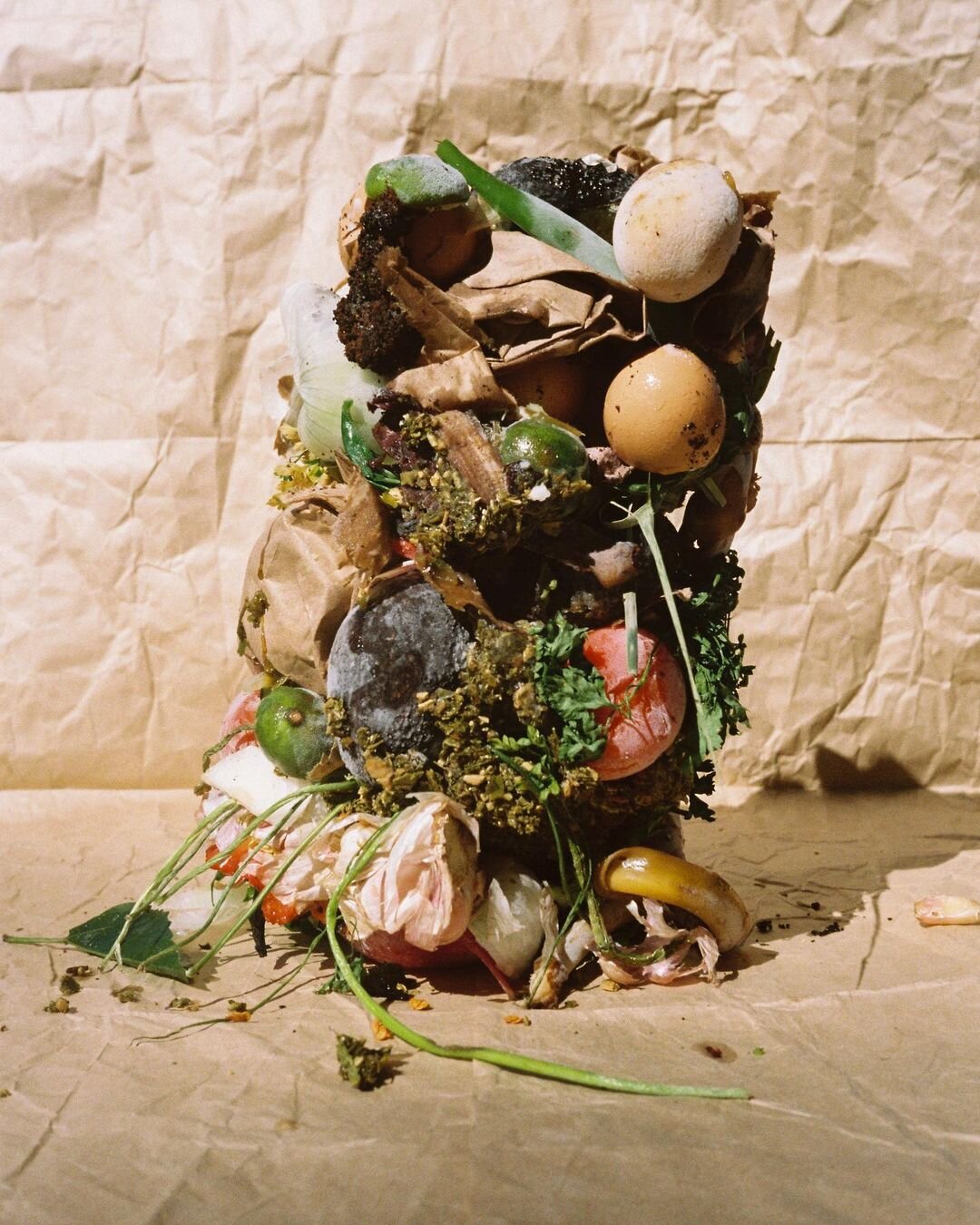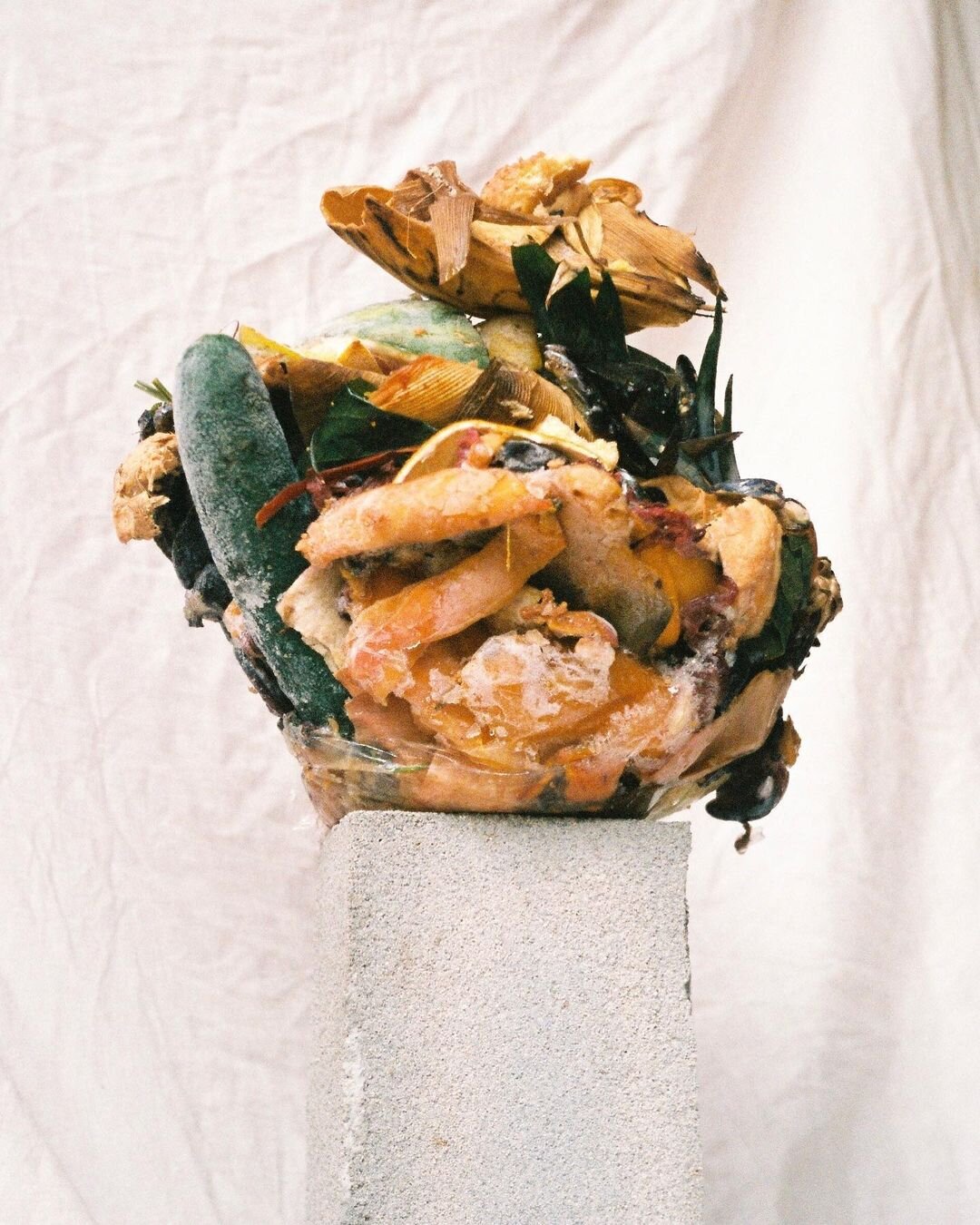Yasmina Benabdelkrim
Yasmina Benabdelkrim sees the human as inseparable from the environment and suggests that thinking across the human and the other-than-human nature may change our attitudes towards the environment, which is so often seen and imagined as inert or as a resource of human use. Benabdelkrim is an interdisciplinary artist who studied at L’Ecole de La chambre Syndical de la Couture Parisienne.
Benabdelkrim is continuously looking for the beauty in all types of found materials by reusing and repurposing them. This quest is not solely to contribute to environmental improvement, but also an ongoing exercise to remind herself of her flexibility and the longevity of her creativity.
Reimagining ourselves as bodies of compost seems all the more pressing in the ecological crises of the anthropogenic era. The anthropocene is the name given for the new geological epoch, in which we live, defined by an overwhelmingly human impact on the earth. What made you start this project of using compost to build your sculptures?
I am very interested in the idea of the anthropocene. The thing is, I wish more people were aware of the overwhelming human impact on the earth and the era that we’re currently facing which is not only affecting the lives of other species, but in consequence the human species. Environmental respect, respect towards each other and the co-habitation of species together are the starting point of my project. We are alive because of earth. I observed how organic food was not waste, but material to regenerate our lands and to give back to earth as she is giving life to us. I am obsessed with what is considered as waste, a human invention. Organic decay is not waste - it is a natural process of the cycle of life. The food system is based on a capitalist approach which does not suit Earth’s natural way of producing. An estimate of 1/3rd of the whole food produced for consumption goes to waste every year. This is very alarming.
I started to photograph organic material because I was obsessed with the beauty & the benefits behind composting and the natural cycle.
I feel that my compost series is a way to turn upside down the concept of food wastage that even if there is an awareness of it, there is not a reaction and action towards the humongous problem of food consumption and waste.
Your compost sculptures take various shapes but sometimes you also play with the idea of the human body whereby you trace the human form while building your compost sculpture. You seem to be hinting that you want us to cease to consider the environment as something exterior or impersonal to ourselves. What is the connection you make between the human body and the body of the compost sculptures?
Almost 99 percent of the human bodies are made out of oxygen, carbon, nitrogen, hydrogen, calcium and phosphorus.
As you can see we are made out of the same elements as other co-habitants of earth. Humans tend to forget where they come from & also we tend to see macro and forgive micro. We human bodies are made out of an estimated 30 trillion cells. When I photograph the compost I see the same compounds I do feel in my body. We live and die like plants and have similar cycles just like any other organic body. Why are we not coexisting as a whole? We are supposed to be in equality with the rest of species instead of feeling that we are on top of the pyramid.
When I photograph the compost and it takes a human shape, it is my way to transmit how we share the same composition like the rest of the ecosystem on Earth.
Can you walk us through the process of how you create these compost sculptures?
On a regular day, I buy food from the market from a little organic seasonal shop that comes from an orchard. I cook my food, and whatever is leftover I create the shape of my sculpture selecting the colour and textures. I then proceed to freeze to preserve my compost. Once it has a stable shape I then start to photograph until it melts. Finally, I bring my sculpture to the compost site in my local community garden.
My creative process starts from a philosophical, cultural and political approach. I find myself as a funnel. I digest the information, and I try to deliver it in a simple and straightforward way. In this case, using visual art to communicate a statement. I mean, it’s just that I think that composting is my lifestyle.
Your compost hybrids seem to be a better way to think about the world from an ecological point of view. Is the location and environment where you build your sculpture important to you? For example, do you build your sculpture by the sea, in the middle of a street, indoors/outdoors?
No. The location is not important. Wherever I go, I compost. The first documented and produced sculptures started in Mexico. I was living with Catita, my Mexican grandmother, I remember her throwing away from the table her papaya and banana peels into the garden. To my fascination I started documenting her food scraps.
In a time before that, I was living in upstate New York in a community, where George, a 75 year old, taught me how to garden & showed me how to look after plants. This is when I learnt how to properly compost and remember the beautiful existential ways of how to complete the cycles of nature. I was amazed about the whole properties and benefits that composting was bringing to earth & in consequence back to humans.
After building the first sculptures in Oaxaca, Mexico, I decided to photo document all the food scraps of my food diary. I can read through my pictures the specific moments of my life, the meals and the places of where I have been. They are a walking remembrance of time and what sharing a meal with others can represent. From there, I kept doing sculptures in Jalisco, Jerez de la Frontera, Paris & Valencia.
Your creative studio New Creative Paradigm is going to be launched this year. In this studio you create imagery in a new way under the same umbrella philosophy that informs your compost sculptures. Can you talk to us more about this?
In New Creative Paradigm I share my process of creativity that aligns with a sincere integrity towards Earth through a 360 degree methodology & approach. In my opinion, in this Anthropocene era created by our actions, being wasteful to produce a project or an image that in the end pertains towards creative selfishness is not an option for myself.
I have been working on my creative practice on the long run for many years, knowing and unknowingly I have been an artist working independently on different projects. I then realized I have this universe connecting together where all of my independent work shares the same manifesto. I needed to create a platform to show what I do as initially nobody was understanding what I was creating. I understood that all of my projects share the same point of view and deliver a straightforward statement.
New Creative Paradigm is my way to share my interdisciplinary vision that comes out in different mediums depending on the transmission of each subject. This creative studio will be a platform for clients that want to generate visual content under new & updated ways of production. We do not want to generate more waste by being creative - as in my opinion creative solutions are unlimited and can be done in many ways.
interview WARREN BARTOLO
What to read next















